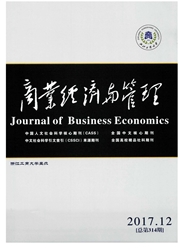

 中文摘要:
中文摘要:
提高现代流通业的效率,有利于建立适应社会主义市场经济的城乡一体、竞争有序、统一开放、安全高效的现代流通体系,有利于加快国民经济发展速度,提高国民经济质量和效益。文章首先从投入、产出方面构建了现代流通业效率评价指标体系,并根据我国30个省市流通数据,运用GRA-DEA(灰色关联一数据包络)混合模型对我国现代流通业效率进行测度与评价。研究结果表明,流通业从业人员、流通业固定资产投资、货运量、公路里程、铁路里程、R&D经费是现代流通业效率的主要影响因素;2010—2012年我国现代流通业综合效率、技术效率呈现先降后升趋势,规模效率逐年上升;北京、天津、上海等省市现代流通业的投入产出结构相对合理,已达到效率最优状态,辽宁、浙江等省市流通资源配置没有实现最优组合,有较大提升空间。在此基础上,提出了相应的政策建议,并对未来的研究方向进行展望。
 英文摘要:
英文摘要:
The increase in efficiency of modem circulation industry contributes to establishing a modern circulation system that is unified, open, safe, competitive and in good order. It helps to improve the quality and efficiency of economic growth too. This paper constructs evaluation index system in respect of input and output. Then it evaluates the efficiency of the modern circulation in- dustry with the provincial data from 2010 to 2012 and mixed mode of GRA and DEA. The results show main factors that influence the input of modern circulation industry: employee, investment in the fixed assets, freight volume, length of highway and railway, and R&D funds. What is more, comprehensive and technical efficiency goes up after a decline, and scale efficiency rises in China from 2010 to 2012. Some provinces have reasonable input-output structure in an optimum state, such as Beijing, Tianjin and Shang- hai. However, other provinces have not used resources optimally, such as Liaoning, Zhejiang. Lastly, suggestions to improve the modern circulation efficiency and prospects for research are proposed.
 同期刊论文项目
同期刊论文项目
 同项目期刊论文
同项目期刊论文
 期刊信息
期刊信息
